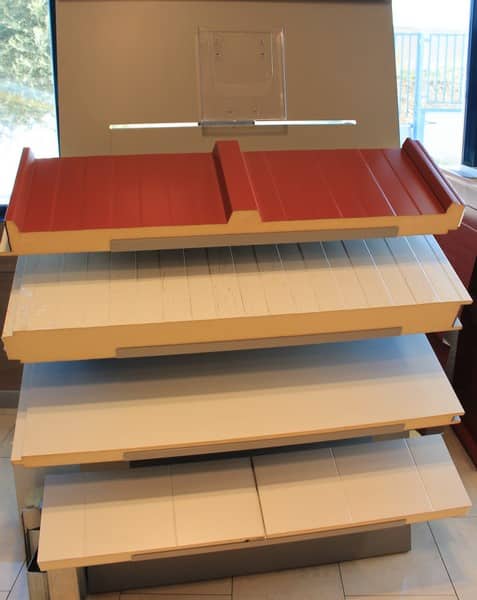We know the advantages of the insulated panel construction system, but do we know how to choose the most appropriate insulated panel for our building project? In this post, you will find a series of questions you should ask yourself in order to choose the most suitable insulated panels for your building. The usage of the building, the climate, the temperature conditions, proximity to the sea and extreme conditions are some of the aspects to think about. Considering all these questions, you will be able to define materials, finishes, and thicknesses for the panels you use.
Deciding which insulated panel characteristics to choose
Insulated panels are a material that over time has gained market visibility over other materials and, given this growth, it has stopped being a product difficult to find or a rejected innovation (like most innovations). Increasingly, builders are leaning more towards using the panels for their projects and these are no longer limited to those in the industrial sector, as you may think since panels are found in buildings as diverse as schools, churches, gyms, sports centers, transport terminals, and homes.
However, deciding which sandwich panel to use for each project is a task for which the technical team must take due action. The inexpensive option will not always be the best (e.g. polystyrene) and, even worse, it could be counterproductive, affecting everything from the building’s efficiency to putting the safety of its users at risk. Taking this into account, there are a number of aspects that must be taken into account. Here are the most important ones.
Aspects to consider
The use that will be given to the building.
Depending on the purpose of the property, panels for both ceiling and wall will vary. For example, office buildings tend to have a less “rough” use than product warehouses.
Technical considerations.
These are aspects that have a relation to the safety of the building. Thus, the following should be taken into account:
– The characteristics of the panel in relation to the resistance to snow loads on the roof for those locations with harsh winters.
– Wind resistance should always be taken into account, especially for buildings of considerable height and those in coastal locations or exposed to hurricanes and similar phenomena.
– Water tightness, something that has more to do with the joints of the panels and the quality (brand) of the products to acquire.
– Main and secondary structures of the building

The Climate and Weather
The climate is going to be a determining factor on the panels to install, for example, coastal locations usually have a very salty air, something that is essential to define what type of paint will be used for the panel. Also, wind, snow, rain, and humidity have to be analyzed in order to determine the best option.
Insulating considerations
The thermal factor is crucial and determined by the type of foam core material and its thickness. For example, you will not be able to use the same type of panel for a furniture store as for a cold warehouse for salmon. Thus, if high thermal insulation is desired, a PIR panel is one of the primary options, while mineral wool may not be as adequate.
Fire resistance is a very important issue. Depending on each country or region, there are minimum regulations to comply with. Under equal conditions and dimensions, rock wool panels perform better when it comes to fire in comparison to PIR or PUR.
Sound insulation. This will determine the thickness of the panel. In general, rock wool tends to have better sound insulation properties.

Aesthetics Considerations
Insulated metal panels give the facilities a modern, industrial, and maybe tough appearance to a certain extent, something that may not be desired for homes, although this will depend on the design capabilities of the architect. Still, there are alternatives such as corten steel and wood panels, which allow a cozier yet modern appearance.
As a conclusion
It is highly relevant to recall that the ecological aspects should not be forgotten, since insulating panels give the building important advantages in this regard, due to their low impact on the environment, reduced energy consumption, and recycling properties. Moreover, it has to be analyzed if a certification like LEED or another would be desired, not only because of the financial and image benefits these permit but also because the planet needs this more than ever!
These are the most significant matters to consider when designing a building with insulated panel covers, however, there are others that require evaluation according to the provider chosen, such as their experience with this type of materials, technical support, quality of products, and the ability to provide additional services like logistics and detailing. We cover these in other posts.


